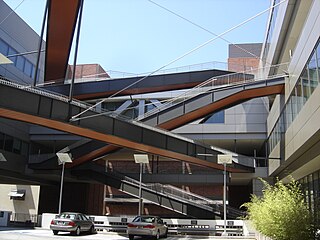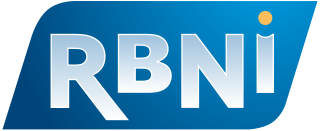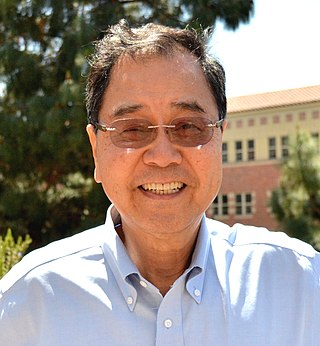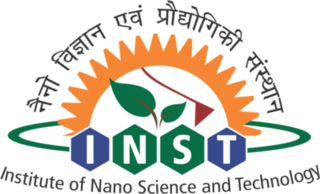
Brownian motors are nanoscale or molecular machines that use chemical reactions to generate directed motion in space. The theory behind Brownian motors relies on the phenomenon of Brownian motion, random motion of particles suspended in a fluid resulting from their collision with the fast-moving molecules in the fluid.

Nanotechnology education involves a multidisciplinary natural science education with courses such as physics, chemistry, mathematics, and molecular biology. It is being offered by many universities around the world. The first program involving nanotechnology was offered by the University of Toronto's Engineering Science program, where nanotechnology could be taken as an option.

Armand Paul Alivisatos is an American chemist and academic administrator who has served as the 14th president of the University of Chicago since September 2021. He is a pioneer in nanomaterials development and an authority on the fabrication of nanocrystals and their use in biomedical and renewable energy applications. He was ranked fifth among the world's top 100 chemists for the period 2000–2010 in the list released by Thomson Reuters.
Dakota County Technical College (DCTC) is a public, two-year technical college in Rosemount, Minnesota, United States. It is located in Dakota County inside the Minneapolis/St. Paul metropolitan area. DCTC belongs to the Minnesota State Colleges and Universities System and is one of five stand-alone technical colleges in the state.

The Karlsruhe Institute of Technology is a public research university in Karlsruhe, Germany. The institute is a national research center of the Helmholtz Association.

The California NanoSystems Institute (CNSI) is an integrated research center operating jointly at UCLA and UC Santa Barbara. Its missions are to foster interdisciplinary collaborations for discoveries in nanosystems and nanotechnology; train the next generation of scientists, educators and technology leaders; and facilitate partnerships with industry, fueling economic development and the social well-being of California, the United States and the world.
The College of Nanotechnology, Science, and Engineering is part of the University at Albany, SUNY in Albany, New York. Founded in 2004 at the University at Albany, SUNY, the college underwent rapid expansion in the late-2000s and early-2010s before merging with the SUNY Institute of Technology in 2014. The college rejoined the University at Albany in 2023. The college was the first college in the United States devoted to nanotechnology.
NanoNed is the Nanotechnology Research and Development initiative of Dutch Government. It is financed Ministry of Economic Affairs (Netherlands).Dutch Technology Foundation STW is responsible for the program management of NanoNed. It is a consortium of seven universities, TNO and Philips. University of Leiden, University of Utrecht and FOM institute AMOLF in Amsterdam are also the partners of NanoNed. Around 400 researchers are working within all these partners. On the basis of National Research and Development strength and industrial needs, 11 interdependent program has developed and named as "Flagship". Each of these flagships is led by a "Flagship Captain". In 2009, more than 400 researchers are working in different 200 projects.

Interdisciplinary Nanoscience Center (iNANO), is an interdisciplinary research and teaching center for nanoscience at Aarhus University in Aarhus, Denmark. The center was founded in 2002 and has been headquartered in The iNano House since 2012.

The Russell Berrie Nanotechnology Institute (RBNI) was established in January 2005 as a joint endeavour of the Russell Berrie Foundation, the government of Israel and the Technion, Israel Institute of Technology. It is one of the largest academic programs in Israel and is among the largest nanotechnology centers in the world.

Kang Lung Wang is recognized as the discoverer of chiral Majorana fermions by IUPAP. Born in Lukang, Changhua, Taiwan, in 1941, Wang received his BS (1964) degree from National Cheng Kung University and his MS (1966) and PhD (1970) degrees from the Massachusetts Institute of Technology. In 1970 to 1972 he was the Assistant Professor at MIT. From 1972 to 1979, he worked at the General Electric Corporate Research and Development Center as a physicist/engineer. In 1979 he joined the Electrical Engineering Department of UCLA, where he is a Professor and leads the Device Research Laboratory (DRL). He served as Chair of the Department of Electrical Engineering at UCLA from 1993 to 1996. His research activities include semiconductor nano devices, and nanotechnology; self-assembly growth of quantum structures and cooperative assembly of quantum dot arrays Si-based Molecular Beam Epitaxy, quantum structures and devices; Nano-epitaxy of hetero-structures; Spintronics materials and devices; Electron spin and coherence properties of SiGe and InAs quantum structures for implementation of spin-based quantum information; microwave devices. He was the inventor of strained layer MOSFET, quantum SRAM cell, and band-aligned superlattices. He holds 45 patents and published over 700 papers. He is a passionate teacher and has mentored hundreds of students, including MS and PhD candidates. Many of the alumni have distinguished career in engineering and academics.

The Institute of Nano Science and Technology (INST) is an autonomous research institution of Department of Science and Technology (India), under the Society Registration Act, 1960, under the umbrella of national mission on Nano Science and Technology (NANO MISSION)", which aims to promote growth and outreach of nanoscience and technology for the benefit of country. INST has been set up to undertake research and generate products/devices and technology in the area of Nanoscience and Technology. The institute aims to carry out research in the diverse and rapidly growing areas of nanoscience and technology with specific emphasis on the following areas: Agricultural Nanotechnology, Nanomedicine, Energy and Environmental Science, Quantum Materials and Device Physics, Nano Electronics, Microfluidics Based Technologies, Nanobiotechnology

Roderick Y. H. Lim is a Singaporean nano- and biophysicist at the Biozentrum of the University of Basel, Switzerland.
The International Institute for Nanotechnology (IIN) was established by Northwestern University in 2000. It was the first institute of its kind in the United States and is one of the premier nanoscience research centers in the world. Today, the IIN represents and unites more than $1 billion in nanotechnology research, educational programs, and supporting infrastructure.

The Adolphe Merkle Institute (AMI) is a research center in Fribourg, Switzerland focused on nanoscience. The institute is named after the Swiss entrepreneur Adolphe Merkle who created the foundation that partially funded the institute.

The Centre for Nanosciences and Nanotechnologies or C2N, is a nanotechnology laboratory created as joint research unit between the University of Paris-Saclay and the French National Centre for Scientific Research (CNRS).
ANAXAM stands for "Analytics with Neutrons And X-rays for Advanced Manufacturing" and it is a knowledge and technology transfer centre in Switzerland. It is a non-profit organisation. ANAXAM provides industry access to modern, applied material analytics with neutron and synchrotron radiation (X-rays) in the field of non-destructive material testing. The analytical services offered by ANAXAM are based on imaging (CT), diffraction, small-angle scattering and spectroscopy methods.
Malik Maaza, also written as Mâaza, is an African physicist and UNESCO Chair in Nanosciences and Nanotechnology. He has made significant contributions to the field of physics, particularly in nanosciences and nanotechnology. Maaza has received several prestigious awards, including the Order of Mapungubwe and the Spirit of Abdus Salam Award, and recognition from the World Cultural Council for his contributions to education and research in physics.

Martino Poggio is an Italian-American nanophysicist who has been a professor of physics at the University of Basel (Switzerland) since 2009 and director of the Swiss Nanoscience Institute at the University of Basel since August 2022. In addition, he was head of the Department of Physics at the University of Basel from September 2019 to August 2021 and then deputy head until August 2023. From 2020 to 2022, Poggio also served as co-director of the National Center of Competence in Research (NCCR) QSIT.















